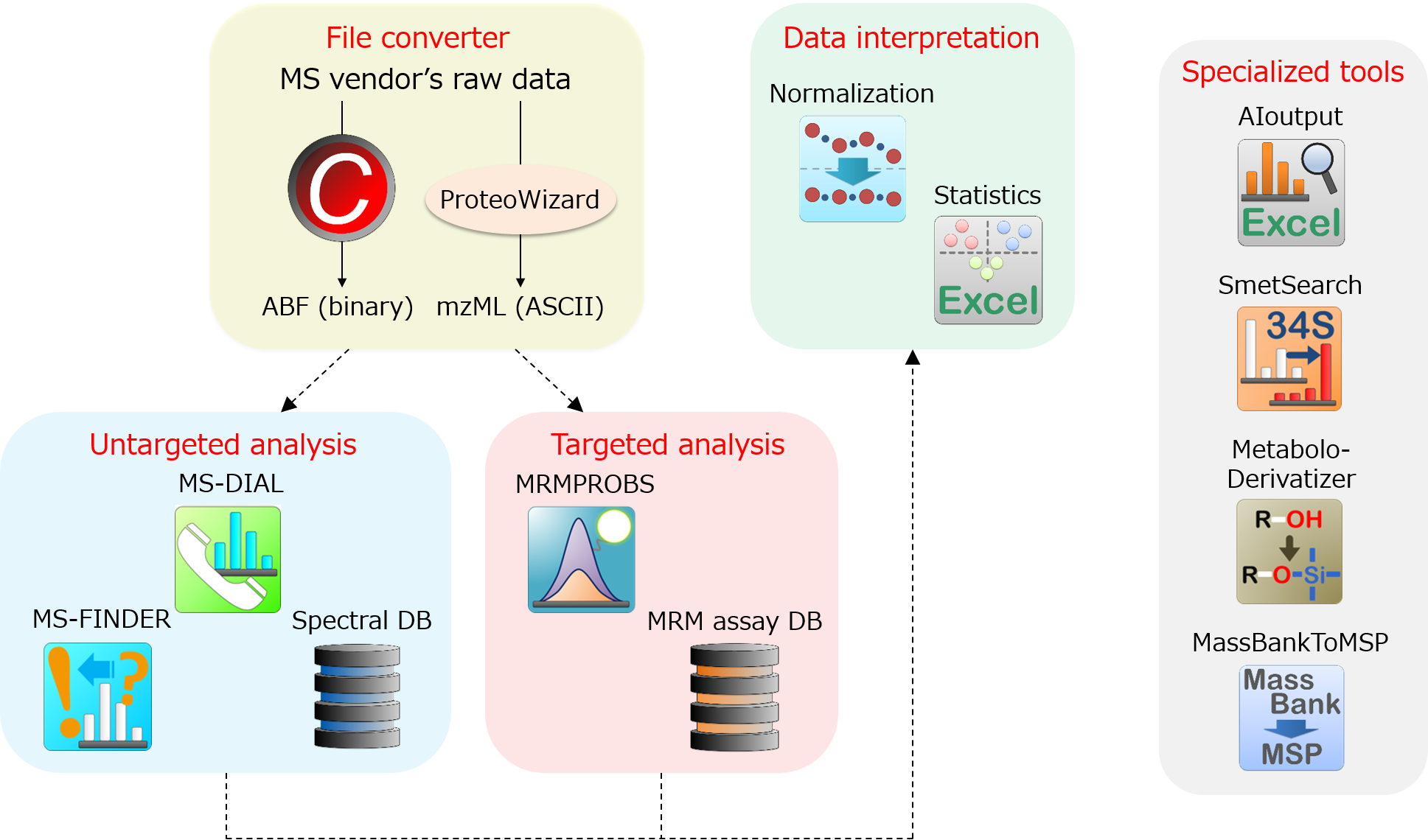MRM database
Objective
For the further development of metablomics research, we offer not only a data processing tool but also at least the recommended analytical conditions. Because the "metabolomics" research field is an interdisciplinary area of biology, analytical chemistry, and bioinformatics, both of analytical method and data processing method should be provided. In the MRMPROBS project, the recommended MRM analytical conditions and its reference library are also provided from this site. This database will be continually-revised.
License: Creative-Commons By-Attribution (CC-BY)

Databases
Ion-pair LC-QqQ/MS
Feature
The ion-pair regent such as tributylamine(TBA) with ODS column have been frequently used especially for the analysis of "central metabolites" including glycolysis, pentose phosphate pathway, TCA cycle, and energy metabolites. This technique can clearly separate the isomeric metabolites such as glucose 6-phosphate, glucose 1-phosphate, and fructose 6-phosphate.
Target metabolites: sugar phosphate, nucleotide, CoA, and others.
MRM transition number: 166 (60 metabolites)
MRM transition number: 166 (60 metabolites)
Reverse phase LC QqQ/MS for lipids
Feature
The target lipid class is phosphatidylcholine (PC), phosphatidylethanolamine (PE), lysoPC, lysoPE, plasmanyl-PC, plasmenyl-PC, plasmanyl-PE, plasmenyl-PE, free fatty acid (FFA), acylcarnitine (AC), and cholic acid (CA).
This method in combination with MRM-DIFF program should be powerful for MRM-based lipid profiling.
This method in combination with MRM-DIFF program should be powerful for MRM-based lipid profiling.
Target metabolites: Lipids (PC, PE, FFA, AC, CA).
MRM transition number: 284 (284 metabolites)
MRM transition number: 284 (284 metabolites)
Zic Hilic LC-QqQ/MS
Feature
The zic hilic column has also been used for the analysis of central metabolites as well as ion-pair LC. Because the ion-pair regent is strongly retained in the instrument, its platform usually results in the "specialized" machine. Therefore, the zic hilic column is also preferred in order to separate the isomeric metabolites.
Target metabolites: sugar phosphate, nucleotide, CoA, and others.
MRM transition number: 149 (79 metabolites)
MRM transition number: 149 (79 metabolites)
PFPP LC-QqQ/MS
Feature
The pentafluorophenylpropyl (PFPP)-bonded silica column has been used especially for the amino acids, peptides, and nucleic acids. Although the retention time drift is considerably larger than the conventional ODS column, it provides the excellent peak shape and highly quantitative ability.
Target metabolites: amino acid, nucleic acid, and others.
MRM transition number: 175 (59 metabolites)
MRM transition number: 175 (59 metabolites)
GC-QqQ/MS
Feature
This is the alternative method of conventional GC/MS based metabolomics approach. The metabolite is derivatized by methoxyamine and MSTFA. Moreover, the electron ionization (EI) method is utilized. Although the soft-ionization method such as chemical ionization (CI) or other derivative regent have been frequently used in GC-QqQ/MS, this reported method is always useful for highly sensitive and selective measurement for hydrophilic metabolites.
Target metabolites: sugar, sugar alcohol, organic acid, amino acid, amides, amine, and others.
MRM transition number: 285 (103 metabolites)
MRM transition number: 285 (103 metabolites)